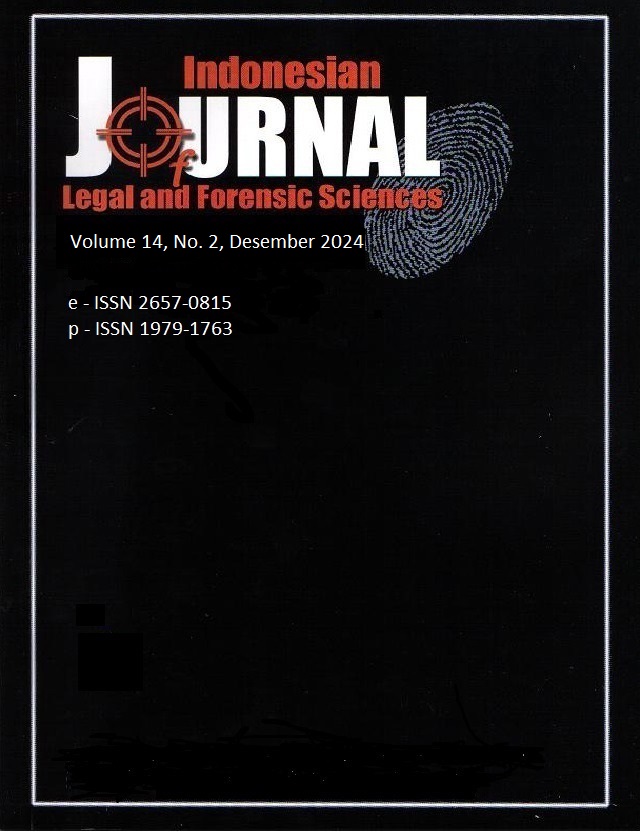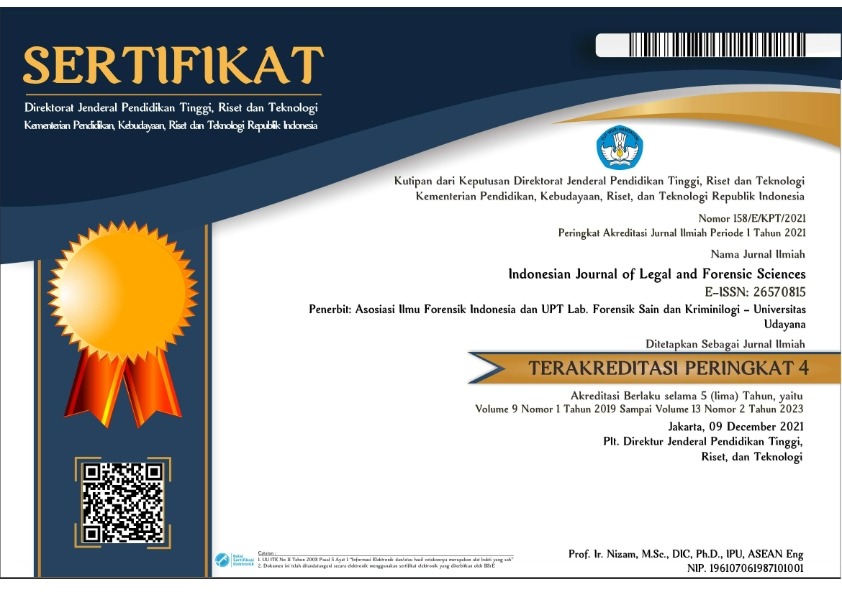The Role of Cone Beam Computed Tomographic (CBCT) in Odontology Forensic for Forensic Identification
Abstract
Cone Beam Computed Tomography (CBCT) is a significant technological advancement in maxillofacial imaging, providing a three-dimensional radiograph that can display the anatomical structure of the jaw bone and face in axial cut or view coronal and sagittal. The main advantage of this technique is that it is a non-invasive method without jaw resection as we have only one scan to be compared with several types of radiographs including panoramic, periapical, and lateral cephalometry. CBCT is popular in dentistry and is increasingly used in forensic cases due to its advantages for antemortem and post-mortem data, including good resolution, portability, and simplicity. CBCT radiography is an important part of forensic odontology because it can support the process of forensic identification of both living and dead through a comparison of antemortem and postmortem data. The use of CBCT radiography is not only for individual identification, but it can also be used to determine the cause of death and predict age, gender, and even ethnic groups. CBCT can also be used as evidence acceptable in the justice system, making it important in forensic identification and medicolegal cases. This current review is an overview of the role of CBCT in odontology forensics especially for identification forensics.
Downloads
References
[2] Mitsea A, Christoloukas N, Rontogianni A, Angelopoulos C. Contribution of Morphology of Frontal Sinuses (Linear and Volumetric Measurements) to Gender Identification Based on Cone Beam Computed Tomography Images (CBCT): A Systematic Review. Vol. 13, Journal of Personalized Medicine. 2023.
[3] Larasati AW, Irianto MG, Bustomi EC, Kedokteran F, Lampung U, Ilmu B, et al. Peran Pemeriksaan Odontologi Forensik Dalam Mengidentifikasi Identitas Korban Bencana Masal. 2018;7:228–33. Available from: https://www.google.com/search?client=firefox-b-d&q=identifikasi+gigi+forensik#
[4] Henky html, Safitry O. Identifikasi Korban Bencana Massal: Praktik DVI Antara Teori dan Kenyataan. Indonesian Journal of Legal and Forensic Sciences [Internet]. 2012;2(1):5–7. Available from: http://ejournal.unud.ac.id/
[5] Yudianto A. Pemeriksaan Forensik DNA Tulang dan Gigi : 1st ed. Furqoni AH, editor. Surabaya: Sintesa book; 2020.
[6] Yudianto A, Sispitasari YE. Isolasi DNA dari Bercak Urine Manusia sebagai Bahan Alternatif Pemeriksaan Identifikasi Personal. Media Pharmaceutica Indonesiana (MPI). 2017;
[7] Carabott R. Brief introduction to forensic odontology. In: Forensic Odontology: An Essential Guide. 2013.
[8] Izham A, Auerkari EI. The use of radiology CBCT in odontology forensics. In: AIP Conference Proceedings. American Institute of Physics Inc.; 2021.
[9] Fathima S. Cbct In Dentistry-An Overview. European Journal of Molecular & Clinical Medicine [Internet]. 2020;07(5). Available from: www.wikipedia.com
[10] Tambawala SS, Karjodkar FR, Sansare K, Prakash N. Sexual dimorphism of maxillary sinus using cone beam computed tomography. Egypt J Forensic Sci. 2016 Jun 1;6(2):120–5.
[11] Jain S, Choudhary K, Nagi R, Shukla S, Kaur N, Grover D. New evolution of cone-beam computed tomography in dentistry: Combining digital technologies. Imaging Sci Dent. 2019 Sep 1;49(3):179–90.
[12] Mathew A, Jacob L. 3D evaluation of maxillary sinus in gender determination: A cone beam computed tomography study. Journal of Indian Academy of Oral Medicine and Radiology. 2020;32(4).
[13] Trochesset DA, Serchuk RB, Colosi DC. Generation of Intra-oral-like Images from Cone Beam Computed Tomography Volumes for Dental Forensic Image Comparison. J Forensic Sci. 2014;59(2).
[14] Mahmoud MS, El Shrief HN, Hamed NF, Megahed RM, Mohammed NA. Assessment of Age and Sex Through Measuring of Maxillary Sinus using Cone Beam Computed Tomography in an Egyptian Sample. Journal for Research and Studies. 2022 Jul;4(2):50–60.
[15] Mallaya S, Lam E. White and Pharoah ’ s Oral Radiology. White and Pharoah’s Oral Radiology E-Book: Principles and Interpretation. 2018;



















